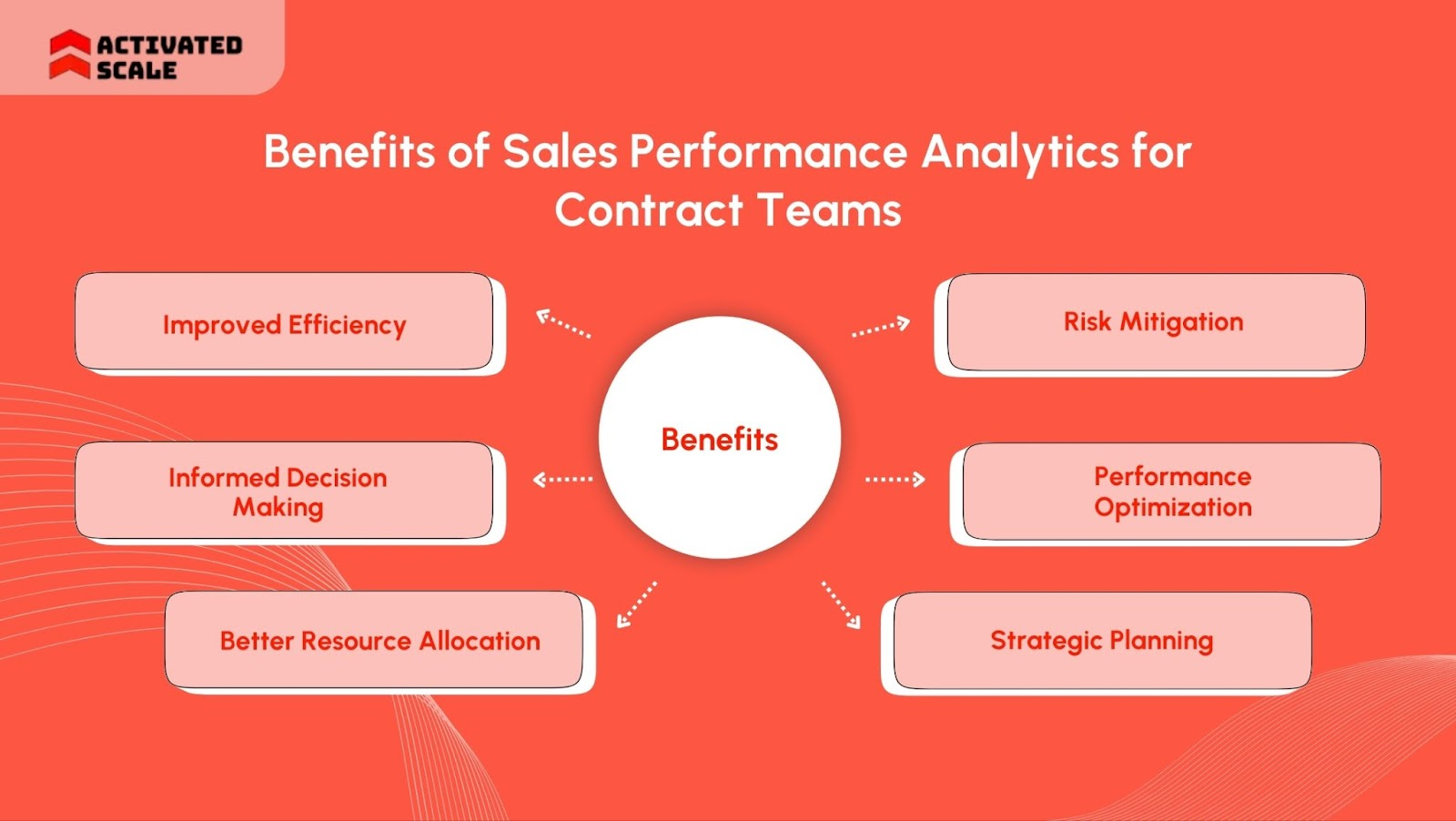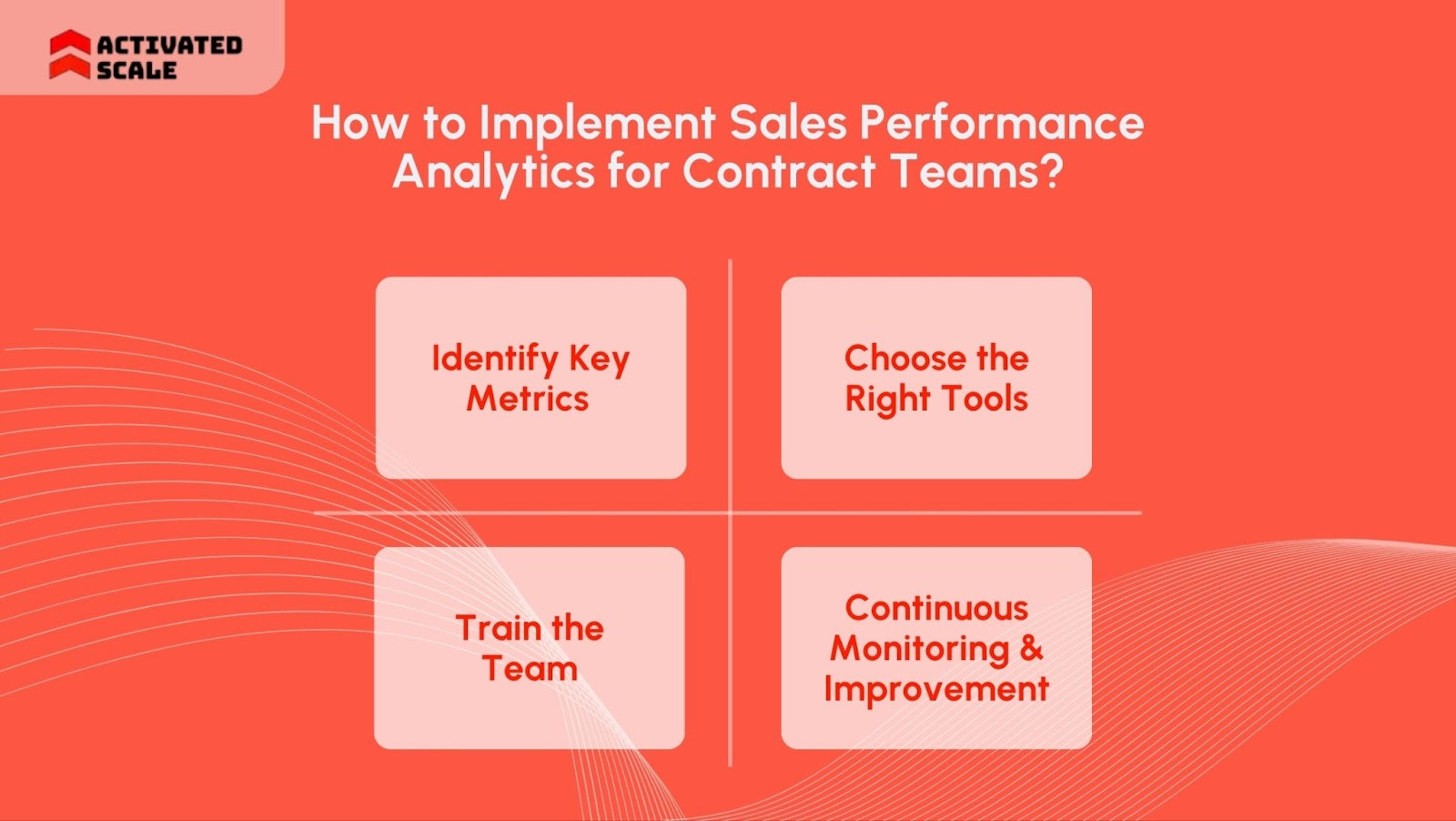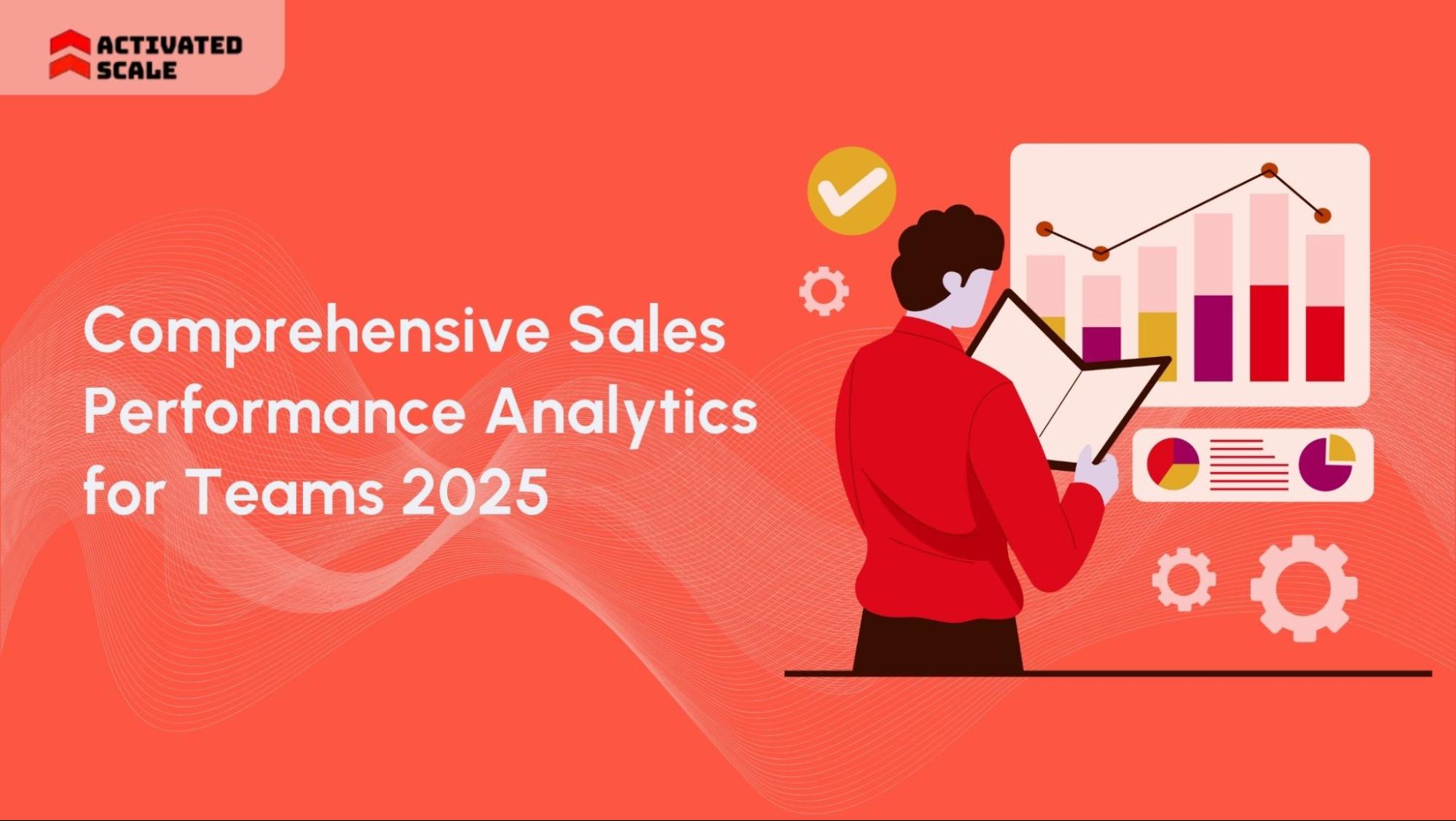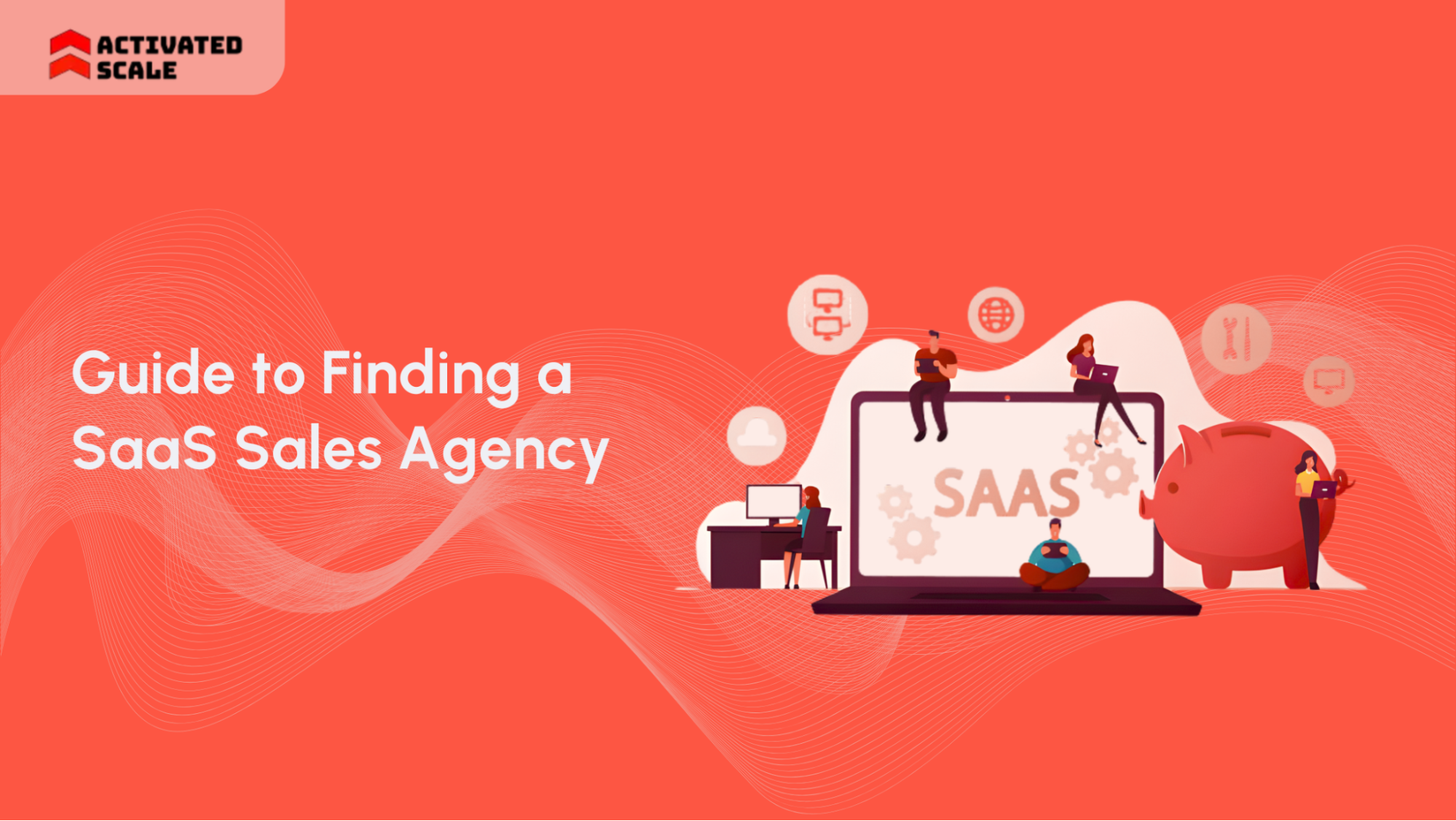Is your contract team operating at its full potential? In 2025, relying on gut feeling is a gamble you can't afford. It's time to replace guesswork with certainty.
Introduce the sales performance analytics platform designed to get your team's true potential. Wondering if it works? Well, one of the best cloud data-driven companies, like Oracle Cloud Infrastructure, is serving customers worth half a trillion dollars.
Though your contractual sales team isn’t always bound to use cloud technologies. However, it proves that data-driven sales performance analytics for contract teams can generate better revenue.
How? In this guide, we’ll talk about that. More importantly, we’ll share the most important key performance indicators (KPIs) that you’ll need for business growth.
Key Takeaways
- Using sales performance analytics can significantly improve efficiency. With this, contract teams can focus more on closing deals and driving revenue.
- Data-driven decisions become a reality when you use the right KPIs and analytics tools. These insights help optimize contract negotiations for your business.
- Your team can track success metrics like renewal rates and deal closures, making it easier to adjust strategies and achieve better outcomes.
- Regularly analyzing contract data provides valuable insights that allow teams to increase customer retention.
What is Sales Performance Analytics for Contract Teams?
In 2025, sales performance analytics assesses the efficiency of contractual sales teams in managing leads. This approach is especially valuable from lead conversion to contract closure.
Because with key metrics like conversion rates and customer satisfaction, sales teams can make data-backed decisions. Analytics also help contract teams identify patterns that are not obvious through manual review.
That’s why, for contract teams, analytics goes beyond performance reports as it drastically reduces human error. So, exactly how does it help you in real-world business? We’ll provide that answer in the next section.
Also Read: 18 Cutting-Edge Sales Performance Metrics to Boost Efficiency
Benefits of Sales Performance Analytics for Contract Teams

This is your turn to get the most out of your contractual team. What usually happens for the sales contract team is that their performance becomes difficult to manage.
Since sales analytics shares the hidden insights in your workflow, you understand where they are lacking to improve. After that, you can finally understand what to do to close faster and perform better. Here’s how sales performance analytics plays its beneficial role:
- Improved Efficiency: Sales performance analytics organizes the entire contract process, reducing the time spent on administrative tasks. So, your team can focus on high-value tasks like improving customer relationships.
- Risk Mitigation: Analytics helps identify potential legal, financial, and operational risks early in the contract lifecycle. Real-time risk identification allows teams to act proactively, ensuring that contract terms align with business goals.
- Informed Decision Making: Data-driven insights enable contract teams to make better decisions regarding pricing strategies and performance incentives. Teams can adjust strategies accordingly, improving the overall negotiation process.
- Performance Optimization: Continuous monitoring of individual sales rep performance helps in targeted training. Teams can implement personalized strategies to improve efficiency in this way.
- Better Resource Allocation: Analytics allow teams to allocate resources more effectively based on average deal size. It allows teams to identify high-value sales opportunities and optimize pricing strategies.
- Strategic Planning: Analytics informs long-term business strategies. You can better plan for market changes and enhance customer acquisition strategies.
Looking to take your sales performance to the next level? With Activated Scale's Fractional Sales Leadership, you can hire expert VPs of Sales to design actionable sales strategies.
The right KPIs turn raw data into a roadmap for success. However, you can find 50+ KPIs in the top-ranking blogs that might lead to confusion. So, we’ve summarised only the important ones you need to focus on.
16 KPIs to Track for Sales Performance Analytics
Forget generic metrics. True performance comes from KPIs customized to your unique goals. Most importantly, why track metrics that don't move the revenue needle?
The most powerful KPIs are those that are aligned with your business goals. Learn how to select and use them to improve your contract team:
1. Lead Generation Percentage
Definition:
Measures the percentage of leads generated by the sales team compared to the target or goal.
How to Measure:
Lead Generation Percentage = (Leads Generated / Targeted Leads) × 100
How It Helps:
A higher lead generation percentage shows the team's ability to attract prospects. Tracking this helps to evaluate the efficiency of the lead generation process and adjust strategies accordingly. A low percentage indicates the need for more targeted lead-generation strategies.
Tools Required:
Use Customer Relationship Management (CRM) software (e.g., Salesforce, HubSpot) and analytics platforms (e.g., Google Analytics) to monitor and report on leads generated.
2. Lead Response Time
Definition:
The time it takes for a sales rep to respond to a lead after initial contact.
How to Measure:
Lead Response Time = Total Time to Respond to Leads / Total Number of Leads
How It Helps:
Quicker responses generally increase the chances of converting leads into customers. Sales teams can monitor this to ensure they’re acting promptly on high-priority leads.
Tools Required:
Use CRM systems, email automation software (e.g., Outreach, Reply.io), and communication platforms (e.g., Slack, Microsoft Teams) to track lead interactions.
3. Average Conversion Time
Definition:
The average time it takes to convert a lead into a customer, from initial contact to the signed contract.
How to Measure:
Average Conversion Time = Total Time to Convert Leads / Number of Converted Leads
How It Helps:
A faster conversion time indicates a well-organized sales process. Monitoring this helps identify challenges and improve the efficiency of the sales cycle. If the conversion time is too long, it may suggest inefficiencies or obstacles in the sales funnel.
Tools Required:
Use sales pipeline management tools (e.g., Pipedrive, Zoho CRM) and analytics platforms (e.g., Tableau, Power BI) to track and visualize conversion times.
If you’re struggling with prolonged conversion times, Activated Scale’s Fractional Selling services can help. You can hire experienced Senior Development Representatives (SDRs) to organize your conversion process.
4. Average Closed-Lost Time
Definition:
The average time it takes to close a deal that ends in a "lost" status (i.e., a deal that does not convert into a customer).
How to Measure:
Average Closed-Lost Time = Total Time to Close Lost Deals / Number of Lost Deals
How It Helps:
Shorter closed-lost times help sales teams discard unqualified leads early. It allows them to focus on higher-value opportunities, improving overall efficiency.
Tools Required:
Use CRM software (e.g., Salesforce, HubSpot) to track lost deals and sales cycle time.
5. Customer Satisfaction Score (CSAT)
Definition:
A metric used to measure the level of customer satisfaction after a sale is completed, often through post-interaction surveys.
How to Measure:
CSAT = (Number of Satisfied Customers / Total Number of Survey Respondents) × 100
How It Helps:
This KPI is crucial for tracking how well the sales team and contract process meet customer expectations. High satisfaction correlates with higher retention rates and more upsell opportunities.
Tools Required:
Use survey tools (e.g., SurveyMonkey, Qualtrics), CRM systems to track customer interactions, and analytics tools to interpret customer feedback.
6. Churn Rate
Definition:
The percentage of customers who stop doing business with your company or do not renew their contracts during a specified period.
How to Measure:
Churn Rate = (Customers Lost / Total Customers at the Start of the Period) × 100
How It Helps:
Reducing churn is critical for maintaining long-term revenue. Tracking churn helps identify at-risk customers and proactively address issues that lead to contract cancellations.
Tools Required:
Use CRM systems, customer service platforms (e.g., Zendesk), and contract management software (e.g., DocuSign) to track contract renewals and cancellations.
7. Sales Pipeline Health
Definition:
Measures the effectiveness of the sales team in moving deals through the sales funnel.
How to Measure:
Track the number of deals at each pipeline stage, from initial contact to closed-won or closed-lost.
How It Helps:
A healthy sales pipeline ensures that sales teams have enough qualified opportunities to meet their goals. Monitoring pipeline health helps prevent lulls in sales and ensures constant deal flow.
Tools Required:
Use sales pipeline management tools (e.g., Pipedrive, Salesforce) and analytics tools to monitor sales activities at different stages.
Managing a healthy sales pipeline is crucial for consistent revenue generation. With the Fractional Sales Leadership service from Activated Scale, you can establish efficient processes that keep your pipeline flowing smoothly.
8. Brand Mentions
Definition:
The number of times your company, product, or service is mentioned across social media and other public forums.
How to Measure:
Track mentions using social listening tools like Google Alerts, Brandwatch, or Mention.
How It Helps:
Brand mentions help gauge market awareness and public sentiment. Sales teams can use this data to better customize their sales pitch and improve brand reputation.
Tools Required:
Use social listening tools (e.g., Brandwatch, Mention) and CRM systems to track customer interactions.
Brand awareness is key to sales growth. Activated Scale’s Contract-to-Hire Sales Recruiting service can help you build a sales team that engages prospects and boosts your brand’s visibility.
9. Lead Conversion Rate
Definition:
The percentage of leads that are successfully converted into paying customers.
How to Measure:
Lead Conversion Rate = (Number of Leads Converted / Total Number of Leads) × 100
How It Helps:
A higher conversion rate shows the sales team’s ability to effectively close deals. This helps in refining sales strategies and identifying best practices for engagement.
Tools Required:
Use CRM systems (e.g., Salesforce, Zoho) and marketing automation tools (e.g., HubSpot, Marketo) to nurture leads throughout the sales process.
10. Customer Acquisition Cost (CAC)
Definition:
The cost associated with acquiring a new customer, including marketing and sales expenses.
How to Measure:
CAC = Total Marketing and Sales Expenses / Number of New Customers Acquired
How It Helps:
Lower CAC means the company is efficiently acquiring customers. On the other hand, a higher CAC suggests the need to reassess sales and marketing strategies.
Tools Required:
Use CRM systems (e.g., Salesforce, Zoho) and financial tools to track costs and customer acquisition.
11. Sales Growth per Month
Definition:
Tracks the increase or decrease in sales on a month-to-month basis.
How to Measure:
Sales Growth per Month = (Current Month’s Sales - Previous Month’s Sales) / Previous Month’s Sales × 100
How It Helps:
Tracking month-over-month sales growth helps businesses identify periods of increased or decreased performance. It provides the opportunity to adjust sales strategies accordingly.
Tools Required:
Use financial systems (e.g., QuickBooks) and sales analytics tools (e.g., Tableau, Power BI) to track revenue and growth patterns.
12. Revenue per Deal
Definition:
The average amount of revenue generated from each closed deal.
How to Measure:
Revenue per Deal = Total Revenue / Number of Deals Closed
How It Helps:
Revenue per deal is a critical metric to evaluate the profitability of each sale. Higher values indicate that your sales reps are closing more lucrative contracts.
Tools Required:
Use CRM software (e.g., Salesforce, HubSpot), and analytics platforms (e.g., Power BI, Tableau) for tracking and reporting revenue generated.
To truly understand your revenue per deal, consider partnering with Activated Scale’s Fractional Sales Leadership. Our expert VPs of Sales will help you create strategies to ensure you’re maximizing every opportunity.
13. Competitor Pricing
Definition:
Tracks the prices set by competitors for similar products or services.
How to Measure:
Monitor competitor pricing by collecting data through market research or competitive analysis tools.
How It Helps:
Understanding competitor pricing enables the sales team to position your product or service strategically. It also helps in developing more persuasive sales pitches.
Tools Required:
Use competitive analysis tools (e.g., SpyFu, SEMrush) and market research tools (e.g., Statista) to track competitor activities.
14. Average Deal Size
Definition:
The average revenue generated per closed deal.
How to Measure:
Average Deal Size = Total Revenue / Number of Deals Closed
How It Helps:
Tracking deal size helps businesses identify whether they are focusing on high-value or low-value sales. In this way, you can also adjust their strategies for more profitable deals.
Tools Required:
Use CRM systems (e.g., Salesforce, Zoho) and financial reporting platforms to track revenue and deal size.
15. Email Open Rate
Definition:
The percentage of recipients who open marketing or outreach emails.
How to Measure:
Email Open Rate = (Number of Emails Opened / Number of Emails Delivered) × 100
How It Helps:
A high email open rate suggests that the sales team is effectively capturing the attention of potential leads through their email campaigns. It can also point to opportunities for improving email content and targeting.
Tools Required:
Use Email marketing platforms (e.g., Mailchimp, HubSpot), CRM systems (e.g., Salesforce, Zoho), and email tracking tools to refine outreach strategies.
16. Customer Lifetime Value (CLTV)
Definition:
The total revenue a business expects to earn from a customer over the entire relationship.
How to Measure:
CLTV = (Average Purchase Value) × (Average Purchase Frequency) × (Average Customer Lifespan)
How It Helps:
A higher CLTV means customers are making repeat purchases, leading to more sustainable revenue. Sales teams can use CLTV to identify high-value customers and customize strategies for retention and upselling.
Tools Required:
Use customer success tools (e.g., Gainsight) and financial tools to track revenue, purchase frequency, and customer retention.
Looking to increase your Customer Lifetime Value and create stronger, lasting relationships? Activated Scale’s Contract-to-Hire Sales Recruiting service helps you hire experienced sales professionals who can build those long-term connections.
With your key KPIs identified, the next question is: How do we track them efficiently? It's time to move from theory to practice. We'll walk through the steps to implement an organized measurement framework that fuels performance.
Read Also: Hire Sales People for Your Startup
How to Implement Sales Performance Analytics for Contract Teams?

You can't afford to skip this section. Why? Because even the best analytics are useless if implemented poorly. Without a clear plan, you’ll end up with messy data, confused teams, and wasted budget with no results.
This is your blueprint for turning insight into impact:
Step 1: Identify Key Metrics
The first step is to determine which KPIs and performance metrics are most relevant to your contract team. This ensures that you are measuring the right factors that directly impact sales and contract performance.
Step 2: Choose the Right Tools
To track your chosen KPIs effectively, invest in contract management software that integrates advanced analytics capabilities. Power BI, Tableau, or other business intelligence (BI) tools can help visualize your contract performance. These tools can generate:
- Custom Dashboards: Display key metrics such as revenue, contract cycle time, and renewal rates in real-time.
- Data Visualization: Translate complex data into clear, actionable insights through graphs and charts.
- Predictive Analytics: Help project future contract trends, renewal opportunities, and identify potential risks.
Choosing the right software ensures you can monitor these KPIs efficiently and make data-driven decisions.
Step 3: Train the Team
Your team needs to understand how to interpret the insights provided by your sales performance analytics tools. Proper training is key to ensuring that everyone can leverage data effectively for decision-making. Training ensures that your team can fully use the tools and metrics you’ve put in place, driving better performance and results.
Step 4: Continuous Monitoring and Improvement
Sales performance analytics should not be a one-time effort. Because it requires continuous monitoring. Regularly review contract performance analytics to track how strategies ensure improvements are sustained.
Following these steps can prevent you from falling into the loop of challenges and can keep you ahead of your competitors.
Final Thoughts
Implementing sales performance analytics for contract teams is a strategic move that can significantly reduce risks and optimize contract processes. Your data has a story to tell, and are you ready to listen?
Imagine your contract team led by clarity. Where every negotiation is informed, every deal closed with confidence. This is what happens when strategy meets execution.
At Activated Scale, we build your team’s new operating system for growth. Together, we’ll turn insight into action and potential into performance.
Need assistance implementing these strategies and choosing tools for your contract teams? Book a call with our experts at Activated Scale to learn how we can help you enhance your contract team’s performance.
FAQs
1. How long does it take to see results after implementing sales analytics?
Most teams see actionable insights within the first 30 days. However, with full process optimization and measurable performance gains within 3–6 months.
2. Can these tools integrate with our existing CRM and contract systems?
Yes. A key part of our implementation is ensuring seamless integration with your current tech stack to maximize data accuracy.
3. How can I make sure our team actually uses the new sales analytics tools?
Focus on tools that are easy to use and visually clear. Pair this with customized training sessions and regular check-ins. Show how the insights directly help them close deals faster or spot high-value opportunities, so adoption feels practical.
4. What makes your approach different from generic sales analytics platforms?
Our solutions are built specifically for contract teams, focusing on metrics that matter most in negotiations, not just top-line sales data.
The Ultimate Guide to Hiring a Salesperson!
Get the step-by-step guide to hiring, onboarding, and ensuring success!
_edi.png)




